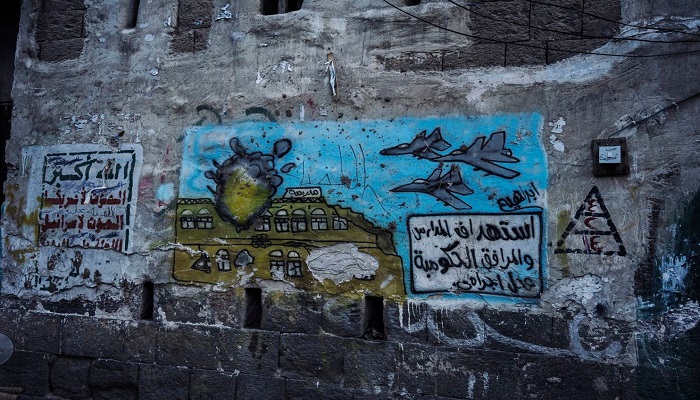The deadly war in Yemen rages on. So why does the death toll stand still?
Washigntopost–There is no end in sight to the vicious war in Yemen, to the blood-soaked battles or careless airstrikes or waves of hunger and disease that stalk civilians even if they escape the bullets and the bombs
And yet, the death toll seems to stand still
For two years, a figure — 10,000 people — has been frequently cited by journalists and relief agencies to describe the number of civilian deaths in the conflict. The number was based largely on reports from Yemen’s crippled health network and first mentioned by a senior United Nations official in August 2016. But in public discussion of the conflict, the number has never been revised, even as the war has retained its ruthless intensity
It is almost certainly conservative and possibly grossly underestimated, according to U.N. officials and analysts who study the conflict, with one independent estimate putting the total number of Yemenis killed in combat at nearly 50,000. The undercount would reflect in part the impossible task of tallying deaths in war zones, where parties to the hostilities provide exaggerated figures while independent monitors are stymied by the violence and shifting battle lines
For some of the same reasons, officials stopped releasing death tolls in Syria’s civil war several years ago — but only after hundreds of thousands of deaths already had been counted, focusing international attention on the slaughter
In Yemen, though, the low death toll has reinforced a sense that the country’s misery is ignored by the wider world. It is rarely covered in the media because of restrictions and difficulties traveling there, but also because of a reticence about explaining the confounding array of actors and grievances attending a conflict in the poorest country in the Arab world

Children play near the rubble of a house destroyed by an airstrike in Sanaa, Yemen’s capital. (Lorenzo Tugnoli/For The Washington Post)
Yemen’s civil war broke out in late 2014 after a rebel group, the Houthis, seized control of the capital and ousted the government, and the conflict intensified when a military coalition led by Saudi Arabia intervened to fight the insurgents. Fighting gripped Yemen’s cities as the violence, along with a blockade imposed by the coalition, starved the country of imports of food, medicine and fuel
The latest battles have focused around Hodeida, a port city on the west coast controlled by the Houthis. The port is the main entry point for food and aid supplies to Houthi-controlled areas. Relief agencies have warned that prolonged fighting there would be catastrophic for the more than 8 million Yemenis — a third of the population — already on the brink of famine, as well as hundreds of thousands of people who live in the city
Airstrikes carried out Thursday by the Saudi-led coalition near Hodeida’s main hospital killed at least 28 people, according to Yemeni medical officials, the Associated Press reported
[ Five reasons the crisis in Yemen matters]
The overall death toll may have reached alarming levels, according to one independent tally. Data collected by ACLED, a group that studies conflicts, puts the death toll at nearly 50,000 people in the period between January 2016 and late July 2018
That number includes combatants but excludes people not directly killed during the fighting — thousands of civilians who have died of malnutrition or cholera, for instance. Last year, Save the Children estimated that 130 children were dying every day because of “extreme hunger and disease
ACLED is still tallying data from the first nine months of the conflict, when the fighting was most intense, meaning that the death toll is certain to rise, according to Andrea Carboni, who researches Yemen for the group. ACLED says it collects information from secondary sources, corroborates it multiple times and uses the most conservative estimates when it comes to fatalities
He said areas of the country are effectively a “black hole” for information. There are often lethal attacks where actual death tolls go unreported, so the group uses a standard estimate of 10 deaths for larger-scale events and three for smaller-scale ones. Although this approach could result in inflated tolls, he said the group’s use of conservative figures and the likelihood it underestimates fatalities in some cases limit the chances of overstating the overall death toll
With the shortage of reliable data and of images and articles, the war has remained an abstraction in the international debate — reducing pressure on the combatants and their international backers to halt the fighting, said Scott Paul, a senior humanitarian officer at Oxfam America
The numbers matter, he said, because they could “bring the true scale and urgency of the ‘world’s biggest humanitarian crisis’ into focus
The U.N. envoy to Yemen on Thursday invited the warring parties to meet in Geneva, in the latest international effort to halt the fighting after several failed attempts
Civilian casualties were highest at the beginning of the conflict, said Kiyohiko Hasegawa, a human rights officer with the Office of the U.N. High Commissioner for Human Rights. His office and other groups detected a pattern of deaths that has continued over the course of the war, in which the majority of civilians were killed by Saudi-led coalition airstrikes that struck homes, markets and schools. The coalition receives military support from the United States
At least 6,500 civilians — including 1,625 children — were killed between March 2015 and July 19, 2018, according to data collected by the U.N. human rights office. “Our figures are probably the most conservative because of the care that goes into verifying each casualty,” Hasegawa said. The group’s data is collected by 13 monitors around the country, who confirm names, ages, addresses and other facts about the victims before including them in the death toll
“We are not able to cover every single incident that happens in Yemen,” he said

